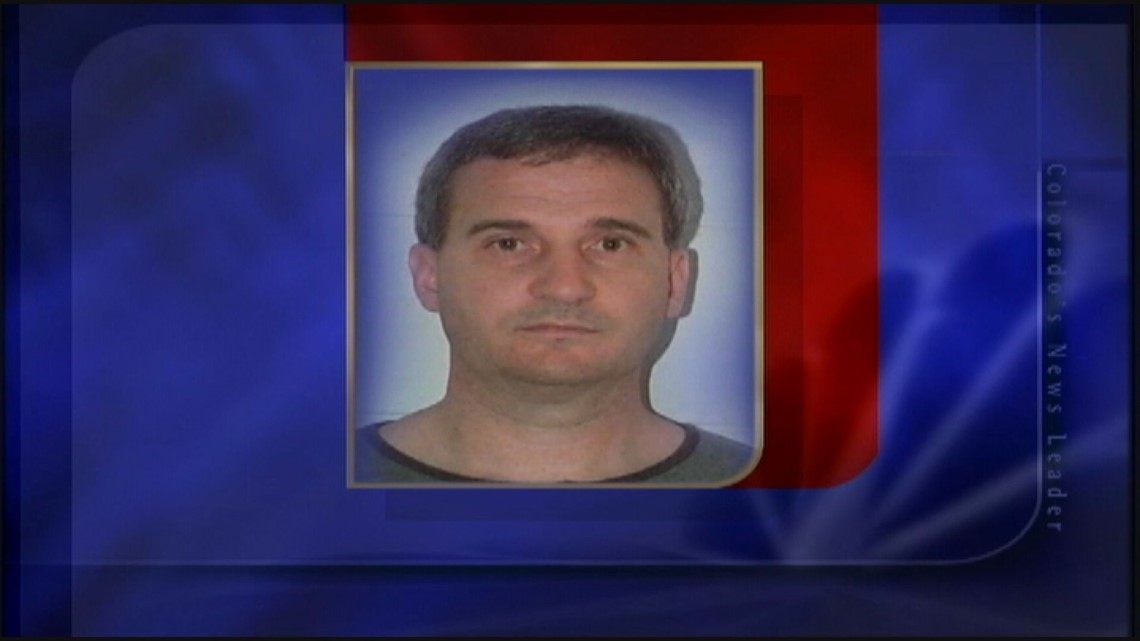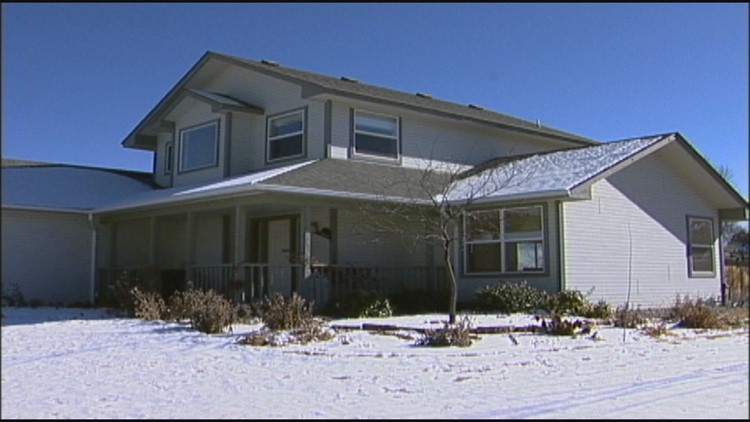The jury got a detailed look at the home of Michael and Jennifer Blagg when the man who photographed the crime scene took the stand Monday.
Michael Saluto , who was a criminal investigator for the Colorado Bureau of Investigation, reviewed dozens of photographs he took Nov. 14 and 15 of 2001 — the two days after Michael Blagg reported his wife and 6-year-old daughter Abby missing.
Prosecutor Mark Hand led the court through the family's two-story, Grand Junction home — noting its normalcy in the photographs — while continuing to build his case against Michael Blagg. Jurors saw a chore chart, a laundry basket on top of a washing machine and a tidy living room.
“The only thing on the first floor that seemed to be out of place was in the master bedroom,” Saluto said.
A small, wooden jewelry box and some of its contents were strewn about the bedroom floor. A calendar laid next to some rumpled clothes. And, most noticeably, a pool of blood covered almost one half of the Blaggs’ king-size bed. Several photographs documented a dark, red liquid that ran down the blue striped bed skirt, pooling on the beige carpet and around the base of a nightstand.
Saluto didn’t find any bullet shell casings or blood spatter on the walls. He did find a handgun in the closet.
The prosecution’s theory is Michael Blagg shot his sleeping wife, wrapped her body in a tent, loaded her body in the family minivan and dropped it in a dumpster at his work. The defense alleges a child predator killed Jennifer Blagg, and the investigators were biased by the notion that it’s “always the husband.”
Six-year-old Abby Blagg is still missing, but the body of her mother was unearthed from the Mesa County landfill June 4, 2002. Deputies arrested Michael Blagg two days later.
In 2004, a jury convicted him of killing his wife, and he served about a decade of his life sentence. Then, a judge overturned that conviction because his defense team discovered a juror had lied about being the victim of domestic violence.
Hand, who didn’t prosecute the original case, spent a significant portion of Monday morning reviewing pictures of a red minivan he alleges Michael Blagg used to dispose of his wife’s body.
He repeatedly asked Saluto to explain the steps he took to prevent contamination.
They went over everything from how Saluto drew blue circles around suspected blood stains to how he taped over lights on the sliding door of the van so a chemical the fluoresces in the presence of blood would work better.
Hand continued to build the theory of his case by asking Saluto whether CBI found blood anywhere else on the first floor.
“There was only one spot that fluoresced for the presence of blood,” Saluto said.
The black weatherstripping beneath the door leading out to the garage.
PREVIOUS STORY | 'We have a wonderful marriage': Michael Blagg talks about day wife, daughter disappeared
It’s a piece of evidence that could help the prosecution build its case that someone carried Jennifer Blagg’s body to the garage. Defense Attorney Tina Fang offered an alternative theory.
CBI found that spot of blood on the second day, and it contained some of Saluto’s DNA. Saluto wasn’t sure how that happened. He said he could have coughed or sweated over the door frame.
Fang suggested that perhaps Saluto deposited both the blood and his DNA by accident.
“You cannot say exactly when this spot of blood was deposited on that garage step,” Fang said.
“That’s correct,” Saluto said.
Fang tried to paint Saluto as a green investigator with little experience processing potential murder scenes. She asked him about photographing the blood in the bedroom and pointed out that he had to get in “fairly close to the evidence.” She followed by confirming that he took those pictures before walking to the garage to photograph the minivan.
Fang never asked Saluto directly whether he could have accidentally brought blood from the bedroom into the van, but the implication became clear as she flashed photo after photo of a seemingly spotless minivan interior on the screen.
Hand interrupted twice to have Saluto clarify that those van photos weren’t the only ones on those rolls of film. On re-direct he showed other photographs that role showing two places Saluto marked potential blood stains. He also asked whether Saluto touched any bloody items in the bedroom.


“No,” Saluto said.
Contamination is a theme Fang pushed during the first week of testimony. She asked Mesa County Sgt. Wayne Weyler whether he contaminated the crime scene. And she plans to call Weyler again after a doctor testifies for the defense.
Fang also reviewed photographs of the backyard fence.
When Michael Blagg called 911 back in November 2001, he told the dispatcher he came home to find the backdoor ajar. The fence backed up to a road and another sub-division. The defense contends that Saluto and the other investigators overlooked clues that pointed to a different killer.
Saluto told the jury he photographed “marks or scuffs within the wood [fence] that seemed to be out of place” and tire marks where it appeared a car pulled off the road behind the house.
However, CBI didn’t spray the backyard fence with a chemical called Luminol to check for blood or make impressions of the tire tracks.
Testimony is scheduled to resume Tuesday at 8:30 a.m.
RELATED | Five stories of Nov. 13, 2001



